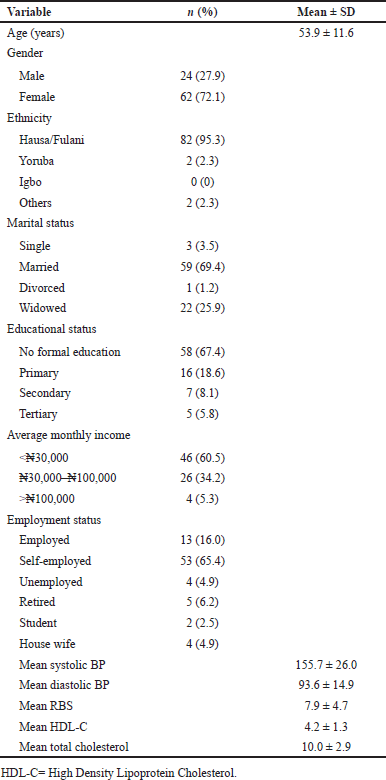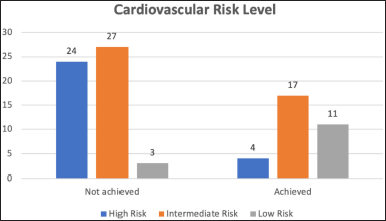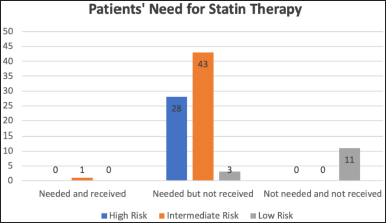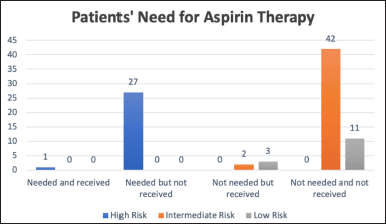INTRODUCTION
Hypertension (HTN) is a significant factor contributing to the development of cardiovascular disease (CVD), stroke, and chronic kidney disease (CKD) [1]. CVD, the leading cause of global mortality in most regions except Sub-Saharan Africa, poses a considerable public health challenge [2]. Thus, it is crucial to accurately diagnose and manage HTN for effective prevention of CVD [3]. Various intervention studies have consistently demonstrated that measures targeting blood pressure (BP) reduction significantly decrease the risk of cardiovascular events [3,4].
Despite the wide availability of antihypertensive drugs, HTN and its associated complications continue to be a major public health problem [5]. Effective HTN treatment lowers the patient’s BP and eventually reduces the associated CVD morbidity and mortality [6]. Although guidelines exist on the treatment of HTN [7,8], studies are lacking in Nigeria on the prescriber’s compliance with these guidelines. This study aimed to evaluate the treatment effectiveness and 10-year CVD risk level in hypertensive outpatients receiving care at Specialist Hospital Sokoto.
METHODOLOGY
Study design
This study employed a prospective cross-sectional design over a period of 4 weeks (between 1st and 28th January, 2020).
Study location
The research was conducted in Sokoto state, North-Western Nigeria. Sokoto State’s population is estimated to be close to 5.4 million [9]. A government-owned tertiary hospital (Specialist Hospital Sokoto) was used for this study. Data from hypertensive outpatients were gathered during the cardiology clinics, which are scheduled to convene every Tuesday and Thursday of each week.
Study population
Eighty-six hypertensive patients attending outpatient clinics at Specialist Hospital Sokoto made the population of the study.
Eligibility criteria
Patients diagnosed with HTN and placed on anti-hypertensive medication at Specialist Hospital Sokoto were included in the study. Inclusion criteria encompassed patients in a stable medical condition capable of participating in interviews. Conversely, individuals in a critically ill state who were unable to engage in interviews were excluded from the study. Written informed consent was obtained from each patient before inclusion into the study.
Sampling techniques
A convenience sampling technique was used and all the eligible patients who came to the clinic during the study period were enrolled.
Study instruments
A pro forma was designed and used in the collection of the patients’ sociodemographic and clinical data. The JNC8 guideline [7] was used to assess the prescribers’ compliance with anti-hypertensive prescriptions and patients’ achievements of the target goal BP. The Framingham 10-year CVD risk score (FRS) estimation [10] was used to estimate the patients’ 10-year CVD risk level.
An electronic sphygmomanometer (OmronTM 20120601350VG) was used to measure the patients’ BP. An electronic glucometer (KiptrackTM 411611924000593) was used to measure the patients’ random blood sugar (RBS). Blood sample bottles, syringes, cotton wool, torniquet, and methylated spirit were used to collect blood samples for patients’ cholesterol level tests. A scale (PYROCHYTM RGZ160) was used to measure the patients’ height and weight during the clinics.
Data collection procedure
The data on the patients’ sociodemographic and clinical characteristics were collected and recorded in section A of the Pro Forma. The sociodemographic data collected include age, gender, ethnicity, marital status, education status, average monthly income, and occupation. The clinical characteristics data collected include weight (kg), height (m), BP (mmHg), RBS (mmol/l), and comorbidities (diabetes, CKD, heart failure, and so on). The data on anti-hypertensives prescribed were collected from the patients’ case folders. The total and high-density lipoprotein cholesterol level of the patients was assessed by sending blood samples of the patients to MEDISTOP Diagnostics Center Sokoto.
Outcome measures
The prescribers’ JNC8 guidelines compliance to anti-hypertensives prescription was accessed using the JNC8 HTN Guideline Algorithm. According to JNC8 [7], black patients of all ages with or without diabetes should be prescribed thiazide or calcium channel blockers alone or in combination. Patients of all ages and races with CKD present with or without diabetes should be placed on angiotensin-converting enzyme inhibitors (ACEIs) or angiotensin receptor blockers (ARBs) alone or in combination with another class. If the target goal BP is not achieved in the patients above, lifestyle reinforcement and adherence should be done, and drugs should be titrated to maximum doses or the addition of an ACEI or ARB should be considered. If the target goal Bp is not achieved, reinforce lifestyle and adherence, and add a medication class not already selected (i.e., beta blocker, aldosterone antagonist, and others). If the target goal BP is still not achieved, reinforce lifestyle and medication, titrate meds to maximum doses, and add another medication and/or refer to an HTN specialist. Patients with compelling indications also have a written guideline to follow while prescribing anti-hypertensives according to JNC8 [7].
The patients’ JNC8 target goal BP achievement was also assessed by the JNC8 HTN Guideline Algorithm. According to JNC8 [7] the target goal BP of patients without diabetes or CKD of ≥60 years and <60 years of age is <150/90 mmHg and <140/90 mmHg, respectively. In addition, patients of all ages with CKD with or without diabetes have a target goal BP of <140/90 mmHg.
The patients’ 10-year CVD risk level was assessed using FRS estimation [10]. According to Framingham, female patients with a Framingham point of ≤12, 13–17, and ≥18 have low, intermediate, and high 10-year CVD risk levels, respectively. While male patients with a Framingham point of ≤10, 11–14, and ≥15 have low, intermediate, and high 10-year CVD risk levels, respectively.
The need for statin prophylactic therapy was assessed using FRS estimation [10]. According to Framingham, all patients with intermediate and high 10-year CVD risk levels with or without diabetes should be prescribed statin as prophylactic therapy.
The need for aspirin prophylactic therapy was assessed using ACC/AHA guidelines. According to the 2019 ACC/AHA recommendations, daily low-dose aspirin (75–100 mg/day) may be considered in adults 40–70 years old who have high 10-year CVD risk levels and have low bleeding risk.
Data analysis
The data obtained was sorted, coded, and entered into the SPSS, IBM version 20.0 for Windows, and subsequently analyzed. Descriptive statistics including frequency, percentages, mean and SD were used to summarize the data. Pearson’s chi-square was used to test for differences in proportions between variables at the nominal level of measurements.
RESULTS
One-hundred and eight patients were recruited over the 4 week recruitment period. Twenty-two patients were dropped out of the study due to insufficient data, leaving a total of 86 patients for the final analysis.
 | Table 1. Sociodemographic and clinical characteristics of the patients. [Click here to view] |
Sociodemographic and clinical characteristics of the patients
The mean age of the patients was 53.9 ± 11.6 years. The majority of the patients were female 62 (72.1%) and Hausa/Fulani 82 (95.3%). Most of the patients 59 (69.4%) were married and 58 (67.4%) had no formal education. The majority of the patients 53 (65.4%) were self-employed and 46 (60.5%) reported earning an average of less than ?30,000 monthly. Diabetes was the only comorbidity presented by 22 (25.6%) of the patients. The mean diastolic blood pressure (DBP), RBS, and total cholesterol were 93.6 ± 14.9 mmHg, 7.9 ± 4.7 mmol/l, and 10.0 ± 2.9 mmol/l, respectively. Details of the sociodemographic and clinical characteristics of the patients can be seen in Table 1 below.
 | Table 2. JNC8 guidelines compliance, target goal BP achievement, 10-year CVD risk level, and prescription of the needed prophylactic therapy. [Click here to view] |
JNC8 guidelines compliance, target goal BP achievement, 10-year CVD risk level, and reception of the needed prophylactic therapy
A total of 51 (59.3%) of the patients’ anti-hypertensive medication, complied with the JNC8 guidelines. The majority 54 (62.8%) of the patients did not achieve their JNC8 target goal BP. More than half 44 (51.2%) of the patients had an intermediate 10-year CVD risk level. Only 1 (1.3%) and 1 (3.6%) of the patients who needed the statin and aspirin therapy, respectively, received it. Details of JNC8 guidelines compliance, target goal BP achievement, 10-year CVD risk level, and reception of the needed prophylactic therapy can be seen in Table 2 below.
Association between JNC8 target goal BP achievement and 10-year CVD risk level
Majority of the patients 27 (50.0%) and 24 (44.4%), p < 0.001 who did not achieve their JNC8 target goal BP had intermediate and high 10-year CVD risk levels, respectively. A total of 11 (12.8%) and 1 7(19.8%), p < 0.001 of the patients who achieved their JNC8 target goal BP had low and intermediate 10-year CVD risk levels, respectively. There was a significant association between the patients’ achievement of their JNC8 target goal BP and 10-year CVD risk level at p < 0.05 (Fig. 1).
 | Figure 1. Association between the patients’ JNC8 target goal BP achievement and 10-year CVD risk level. [Click here to view] |
 | Figure 2. Association between the patients’ prescription of the needed statin therapy and 10-year CVD risk level. [Click here to view] |
 | Figure 3. Association between the patients’ prescription of the needed aspirin therapy and 10-year CVD risk level. [Click here to view] |
Association between reception of the needed statin and aspirin therapy and 10-year CVD risk level
A total of 28 (38.9%) and 43 (59.7%), p < 0.001 patients who did not receive the needed statin therapy had high and intermediate 10-year CVD risk levels, respectively. On the other hand, 27 (96.4%) of the patients who did not receive the needed aspirin therapy had high 10-year CVD risk levels (Figs. 2 and 3).
DISCUSSION
The majority of patients were in the middle age group, female, married, and lacked formal education, aligning with similar demographics found in previous studies [11,12]. A survey in Nigeria conducted by Odili et al. [12] involved the retrieval and assessment of 501 patient case records for adherence to treatment guidelines. The findings indicated a higher prevalence of HTN among women, with an average systolic blood pressure of 163.7 ± 21.9 mmHg and an average DBP of 100.1 ± 13.2 mmHg.
From the results of this study, more than half of the patients received antihypertensive medication that complied with their individual JNC8 guidelines, but the majority of the patients did not achieve their individual JNC8 target goal BP which might have translated to high and intermediate CVD risk in these patients. This may be due lack of adherence to antihypertensive medication. Similar findings were reported by Sessoms et al. [13] where they assessed adherence to the national treatment guidelines for HTN in individuals of African–American descent. The study concluded that the overall provider adherence to national guidelines was good (75%) [14]. Furthermore, Heneghan et al. [15] conducted a study to investigate the extent to which general practitioners were cognizant of prevailing HTN treatment guidelines and their practical integration into clinical settings. The findings indicated a commendable level of awareness regarding these recommendations. However, it was evident that there existed specific constraints and measures that needed to be implemented to improve the actual utilization of the guidelines, particularly when they deviated from observed clinical outcomes. The researchers concluded that achieving enhanced adherence to these guidelines necessitates a proactive healthcare workforce aligned with the scientific foundation supporting such guidance [14]. A commendable level of compliance with treatment guidelines was also reported in a study in Malaysia by Ahmad et al. [15].
On the other hand, a study carried out in Nigeria by Ale et al. [16] centered on assessing the awareness of HTN treatment guidelines among primary-care prescribers and its association with the diagnosis of HTN [17]. The study’s findings indicated a noticeable disparity between the recommendations outlined in the guidelines and the actual implementation of HTN care in Nigeria. Therefore, awareness and training may improve HTN care and reduce the disease prevalence [17].
Additionally, more than half of the patients had intermediate 10-year CVD risk levels. All patients who had intermediate and high 10-year CVD risk levels needed prophylactic therapy with statins as recommended [10]; however, only one patient was prescribed the needed statin. Furthermore, all patients with a high 10-year CVD risk level need prophylactic treatment with aspirin as stated in the AHA/ACC guideline, but only one patient received the needed aspirin prophylactic therapy. This may be due to a lack of information available to the prescribers on the 10-year CVD risk level of their patients. A similar finding was reported by Cederholm et al. [17], where only 15% achieved BP B 140:90 mmHg, implying a low proportion in optimal control with the use of the current treatment target. More than half of the hypertensives had multiple cardiovascular risk factors, and one-third had 20% 10-year CHD risk.
There are some limitations in this study. First of all, this study is prone to selection bias due to the convenience sampling and data collection procedure. Furthermore, a small sample size of the study would limit the generalizability of the findings to diverse contexts.
CONCLUSION
It was discovered from the findings that although the majority of the patients’ antihypertensive medication complied with the JNC8 guideline, most of the patients did not achieve their JNC8 target goal BP. In addition, the majority of the patients had intermediate to high 10-year CVD risk, needed statin and/or aspirin prophylactic therapy, and were not prescribed the needed prophylactic therapy. Future efforts should focus on enhancing healthcare provider education, implementing patient education and adherence strategies, integrating routine cardiovascular risk assessments, and encouraging prescriber adherence to guideline recommendations for prophylactic therapies.
ACKNOWLEDGMENT
The authors extend their sincere appreciation to the Specialist Hospital, Sokoto State, Nigeria, for providing essential support throughout the project’s execution. Furthermore, the authors would like to express profound gratitude to all the patients who not only participated in this study but also contributed to its successful completion through their cooperation and support.
AUTHOR CONTRIBUTIONS
All authors made substantial contributions to the conception and design, acquisition of data, or analysis and interpretation of data; took part in drafting the article or revising it critically for important intellectual content; agreed to submit to the current journal; gave final approval of the version to be published; and agree to be accountable for all aspects of the work. All the authors are eligible to be an author as per the International Committee of Medical Journal Editors (ICMJEs) requirements/guidelines.
FUNDING
There is no funding to report
CONFLICTS OF INTEREST
The authors report no financial or any other conflicts of interest in this work.
INFORMED CONSENT
Informed consent was obtained from all subjects involved in the study.
ETHICAL APPROVALS
Ethical approval was granted by the Hospital Ethics and Research Committee of Specialist Hospital Sokoto (Approval No. SHS/SUB/133/VOL1). Strict measures were in place to ensure the preservation of patient confidentiality and anonymity throughout the course of the study and beyond.
DATA AVAILABILITY
All data generated and analyzed are included in this research article.
PUBLISHER’S NOTE
This journal remains neutral with regard to jurisdictional claims in published institutional affiliation.
REFERENCES
1. Go AS, Mozaffarian D, Roger VL, Benjamin EJ, Berry JD, Borden WB, et al. Heart disease and stroke statistics—2013 update: a report from the American Heart Association. Circulation. 2013;127:e6–245.
2. Shahwan AJ. Epidemiology of cardiovascular disease and associated risk factors in Gaza Strip-Palestine [Doctoral Dissertation]. Limoges, France: Université de Limoges.
3. Yasui D, Asayama K, Ohkubo T, Kikuya M, Kanno A, Hara A, et al. Stroke risk in treated hypertension based on home blood pressure: the Ohasama study. Am J Hypertens. 2010 May 1;23(5):508–14.
4. Lawes CM, Bennett DA, Feigin VL, Rodgers A. Blood pressure and stroke: an overview of published reviews. Stroke. 2004 Mar 1;35(3):776–85.
5. Abel N, Contino K, Jain N, Grewal N, Grand E, Hagans I, et al. Eighth joint national committee (JNC-8) guidelines and the outpatient management of hypertension in the African-American population. N Am J Med Sci. 2015 Oct;7(10):438.
6. Samaila A, Biambo AA, Usman N, Aliyu HH. Drug related problems and implications for pharmaceutical care interventions in hypertensive outpatients in a Nigerian hospital. J Sci Pract Pharm. 2019;5(2):281–6.
7. James PA, Oparil S, Carter BL, Cushman WC, Dennison-Himmelfarb C, Handler J, et al. 2014 evidence-based guideline for the management of high blood pressure in adults: report from the panel members appointed to the Eighth Joint National Committee (JNC 8). JAMA. 2014 Feb 5;311(5):507–20.
8. Shedul GJ, Eraga SO, Odili VU, Ojji DB. Adherence to international guidelines in antihypertensive prescriptions among National Health Insurance Enrollees in a Tertiary Hospital Located in Abuja, Nigeria. Indian J Pharm Pract. 2023;16(1):46–51.
9. Anderson TJ, Grégoire J, Hegele RA, Couture P, Mancini GJ, McPherson R, et al. 2012 update of the Canadian cardiovascular society guidelines for the diagnosis and treatment of dyslipidemia for the prevention of cardiovascular disease in the adult. Can J Cardiol. 2013 Feb 1;29(2):151–67.
10. Njoku CH, Aduloju AB. Stroke in Sokoto, Nigeria: a five year retrospective study. Ann Afr Med. 2004 Nov 16;3(2):73–6.
11. Adisa R, Ilesanmi OA, Fakeye TO. Treatment adherence and blood pressure outcome among hypertensive out-patients in two tertiary hospitals in Sokoto, Northwestern Nigeria. BMC Cardiovasc Disord. 2018 Dec;18(1):1–0. CrossRef
12. Odili VU, Oghagbon EK, Ugwa NA, Ochei UM, Agghomo OE. Adherence to international guidelines int eh management of hypertension in a tertiary Hospital in Nigeria. Trop J Pharm Res. 2008;7:945–52.
13. Sessoms J, Reid K, Williams I, Hinton I. Provider adherence to the national guideline for managing hypertension in African Americans. Int J Hypertens. 2015;2015:7. CrossRef
14. Ahmad N, Hassan Y, Tangiisuran B, Meng OL, Abd Aziz N, Ahmad FU, et al. Guideline adherence and hypertension control at a tertiary hospital in Malayia. J Eval Clin Pract. 2013;19:798–804.
15. Heneghan C, Perera R, Mant D, Glasziou P. Hypertension guideline recommendations in general practice: awareness, agreement, adoption, and adherence. Br J Gen Pract. 2008;57:948–52.
16. Ale OK, Braimoh RW. Awareness of hypertension guidelines and the diagnosis and evaluation of hypertension by primary care physicians in Nigeria. Cardiovasc J Afr. 2017;28:72–6.
17. Cederholm J, Nilsson PM, Anderberg CP, Fröberg L, Petersson U. Blood pressure and other cardiovascular risk factors among treated hypertensives in Swedish primary health care. Scand J Prim Health Care. 2002 Jan 1;20(4):224–9.